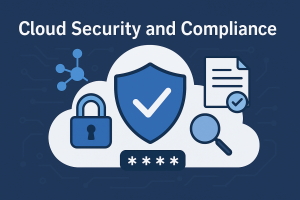The business world is changing fast. Digital transformation is no longer just a buzzword; it’s how companies stay relevant. This means leaders need to think and act differently. Boards are stepping up, using new technologies and data to guide their companies. It’s all about being smart, adaptable, and keeping the customer front and center. Let’s look at how this shift is reshaping leadership.
Key Takeaways
- Effective digital leadership is the main driver for a successful digital transformation, focusing on strategy and vision rather than just technology.
- Next-gen leaders need agile and resilient mindsets to adapt to market changes, encouraging experimentation and balancing productivity with value.
- Boards can use technologies like AI to improve governance, making better decisions and rethinking structures for the digital age.
- Aligning talent, leadership, and business objectives is vital for building competitive digital strategies and ensuring team success.
- Digital transformation impacts company culture, requiring leaders to drive change from the top and empower employees to embrace new ways of working.
The Evolving Role of Leadership in Digital Transformation
Digital transformation isn’t just about new software or fancy gadgets; it’s a fundamental shift in how businesses operate and compete. At its heart, this change demands a new kind of leadership. Gone are the days of top-down, rigid command structures. Today’s leaders need to be more like conductors, orchestrating a complex symphony of people, processes, and technology. Strategy, not just technology, is the real engine driving successful transformation. It’s about having a clear vision and the ability to steer the entire organization toward it, adapting as you go. This means leaders must be digitally aware, understanding how new tools and changing customer habits impact the business. They also need to communicate effectively, making sure everyone on the team understands the direction and their role in it. It’s a big change, and frankly, many companies are still figuring it out.
Navigating Disruption with Visionary Leadership
Leaders today face a landscape that’s constantly shifting. Think about it – new competitors pop up, customer expectations change overnight, and technology evolves at a breakneck pace. To get through this, leaders need a clear vision for where the company is headed, especially in the digital space. It’s not enough to just react; you have to anticipate what’s coming and guide your team proactively. This means making tough calls and setting a direction that inspires confidence, even when the path isn’t perfectly clear. It’s about seeing the possibilities and charting a course through the uncertainty.
Empowering Teams for Future Small and Mid-Sized Business Success
Digital transformation isn’t a solo act. It requires everyone in the company to be on board and contributing. Effective leaders understand this and focus on building teams that are capable and motivated. This involves providing the right tools, training, and opportunities for people to grow their skills. When employees feel supported and have the resources they need, they’re more likely to embrace new ways of working and contribute innovative ideas. It’s about creating an environment where people feel they can make a real difference and are set up for success in the evolving business world. We need to think about how we can help our people adapt to these changes.
Strategy as the Core Driver of Transformation
It’s easy to get caught up in the excitement of new technologies, but without a solid strategy, those tools won’t lead to meaningful change. Leaders must ensure that technology choices directly support the company’s overall goals. This means looking beyond the latest trends and focusing on what will actually move the needle for the business. A well-defined strategy acts as the roadmap, guiding decisions and ensuring that all efforts are aligned. Without this strategic focus, digital initiatives can become scattered and ineffective, failing to deliver the desired outcomes. It’s about making sure the tech serves the business, not the other way around. You can’t just buy your way into transformation; you need a plan. Corporate departments must actively contribute.
Cultivating Agile and Resilient Leadership Mindsets
In today’s fast-paced digital world, old ways of managing just don’t cut it anymore. Companies that stick to rigid, top-down structures often find themselves stuck, unable to keep up with market shifts. The real trick is to build leadership that can bend without breaking, adapting quickly to whatever comes next. This means moving away from just telling people what to do and towards creating an environment where teams can figure things out and respond effectively.
Adapting to Rapid Market Changes
Businesses today face constant change. Think about how quickly customer preferences shift or new technologies pop up. Leaders need to be ready for this. It’s not about predicting the future perfectly, but about building an organization that can adjust its course smoothly when the landscape changes. This requires a willingness to let go of old plans if they aren’t working and to pivot towards new opportunities. We’re seeing a move towards more flexible strategies that can be tweaked as needed, rather than rigid, long-term blueprints. This adaptability is key to staying relevant and competitive in the digital economy. It’s about building a business that can learn and grow continuously, and that’s a philosophy Redtgs embodies in its own approach.
Fostering a Culture of Experimentation
To truly adapt, leaders need to encourage trying new things. This means creating a space where people feel safe to experiment, even if it means failing sometimes. When teams are allowed to test ideas, they learn what works and what doesn’t, which is invaluable. Instead of punishing mistakes, leaders should see them as learning opportunities. This approach helps uncover innovative solutions that might never surface in a more controlled environment. It’s about making sure that new ideas can be explored without fear of reprisal, which is a big shift from traditional management styles.
Balancing Productivity with Value-Based Practices
It’s easy to get caught up in just doing more work, faster. But agile leadership is more about getting more value from the work that’s done. This means focusing on what truly matters to the customer and the business, rather than just ticking off tasks. Leaders need to guide their teams to prioritize efforts that create real impact. This often involves breaking down big projects into smaller, manageable pieces and constantly checking if the work is still aligned with the overall goals. It’s a shift from simply measuring output to measuring outcomes and ensuring that every effort contributes to a larger purpose.
“The ability to balance getting things done with focusing on what brings the most worth is a hallmark of modern leadership. It requires a clear vision and the ability to guide teams toward meaningful results, not just busywork.”
Here’s a quick look at how this balance can be approached:
- Prioritize ruthlessly: Focus on the tasks that deliver the most customer or business value.
- Iterate and refine: Break work into smaller cycles, gather feedback, and make improvements along the way.
- Measure impact, not just effort: Track the results of your work to understand what’s truly effective.
- Empower teams: Give individuals and teams the autonomy to make decisions about how they achieve their goals.
Leveraging Technologies for Enhanced Governance

Boards today are finding that old ways of doing things just don’t cut it anymore when it comes to managing complex, fast-moving businesses. Technology, especially artificial intelligence, is stepping in to help. It’s not just about having fancy new tools; it’s about fundamentally changing how boards operate and make decisions. AI can help boards move from just reacting to problems to actually anticipating them.
AI Integration in Boardroom Decision-Making
Think about how boards used to make calls – a lot of gut feeling and whatever data they could gather. AI changes that. It can look at tons of information, run different scenarios, and show potential results. This means decisions are more based on facts and less on guesswork. For example, AI can spot cybersecurity threats or compliance issues as they happen, not after the fact. This makes the whole company more resilient. It’s like having a super-smart assistant that can process information way faster than any person could. This helps boards make better, more informed choices, especially when dealing with risks.
Rethinking Governance Structures for the Digital Age
Bringing AI into the boardroom isn’t just plug-and-play. You have to change how the board itself is set up. This might mean creating special committees to oversee AI use, making sure it’s fair and follows rules. An AI oversight committee, for instance, can keep an eye on all AI projects, making sure they fit with what the company wants to achieve and don’t cause problems. It’s also really important that everyone on the board understands AI. You can’t oversee something you don’t get. So, training and education are key. Boards need to be AI-literate to guide these new technologies responsibly. This is a big shift, moving from just checking boxes to actively shaping how technology is used for the company’s benefit. It’s about building a governance system that can handle the speed and complexity of today’s world, and you can find resources to help with this transition at EY NextGen.
Strengthening External Partnerships for Innovation
Boards also need to look outside the company for new ideas and tech. Working with startups or research places can bring in fresh perspectives that boards might miss on their own. These outside connections can help boards stay ahead of the curve and find new ways to innovate. It’s about building a network that supports the company’s growth and keeps its governance practices modern and effective. This collaborative approach helps boards adapt to market changes and find new opportunities for success.
Aligning Talent, Strategy, and Business Objectives
It’s not enough to just have a great idea or a slick new piece of tech. For digital transformation to really stick, you need the right people in the right places, all pulling in the same direction. This means making sure your company’s goals, your strategy for getting there, and the actual talent you have on board are all in sync. Think of it like building a really complex machine; every gear has to turn smoothly with the others.
Strategic Team Alignment for Digital Initiatives
Getting everyone on the same page for digital projects can be tough. It’s about more than just assigning tasks. Leaders need to clearly explain why these initiatives matter and how they fit into the bigger picture. This helps teams understand their role and feel more connected to the outcome. It’s about building a shared vision, not just managing a to-do list. When teams understand the purpose behind the work, they’re more likely to be engaged and committed.
Focusing on Employee and Customer Value
Digital transformation isn’t just about the company; it’s about the people who make it run and the people it serves. Leaders need to think about how changes will affect employees – are they getting the training and support they need? And critically, how will these changes benefit the customer? Putting the customer at the center of every decision is what truly differentiates a business in today’s market. It’s about creating experiences that are not only digital but also genuinely valuable and easy for customers to use. This focus on value, for both employees and customers, is key to making transformation efforts successful and sustainable. We need to ensure our talent development strategy starts by pinpointing the intersection between employee personal goals and company objectives. This alignment serves as the foundation for fostering growth and achieving organizational success.
Building Competitive Digital Strategies for Small Business
To stay ahead, companies need strategies that are not just digital, but also smart and forward-thinking. This involves looking at what competitors are doing, but more importantly, understanding market trends and anticipating future needs. It’s about being proactive, not just reactive. Leaders need to be willing to experiment and adapt their plans as the digital landscape shifts. This means constantly evaluating what’s working, what’s not, and being ready to pivot. A strong digital strategy is a living document, constantly being refined to keep the business competitive and relevant.
The Impact of Digital Transformation on Company Culture

Digital transformation isn’t just about new software or fancy gadgets; it’s a massive shift that touches how everyone in a company works and thinks. It really forces a look at the company’s core values and how people interact. Think about it – if you’re suddenly using new tools that change how teams talk to each other, or if customer expectations change how you do business, that’s going to change the vibe of the place, right?
Driving Cultural Change from the Top Down
Leaders have to be the ones showing the way. If the boss is hesitant about new tech or resistant to new ideas, nobody else is going to jump on board. It’s about being open, talking honestly about what’s happening, and showing people how these changes can actually make things better, not just harder. Sometimes it means admitting you don’t have all the answers and learning together.
Embracing Change for Market Relevance
Companies that don’t adapt get left behind. The market moves fast, and if your company culture is stuck in old ways, you won’t be able to keep up. This means being willing to try new things, even if they might not work out perfectly. It’s about staying flexible and making sure the company can adjust to whatever comes next.
The Importance of Employee Empowerment
When you bring in new digital tools, they can really help employees do their jobs better. Giving people the right technology and the freedom to use it can make them feel more in control and more invested in what they’re doing. It’s not just about making them more productive; it’s about making their work more meaningful. When employees feel like they’re part of the solution and have a say in how things are done, they’re more likely to support the changes.
Future-Proofing Leadership Through Data and Analytics
In today’s fast-paced business world, leaders need to be sharp. It’s not just about having a good idea anymore; it’s about backing it up with solid information. The ability to sift through data and turn it into actionable insights is becoming a core leadership skill. Think about it – with so much information flying around, from customer interactions to market trends, knowing what to do with it all can feel overwhelming. But the leaders who can make sense of this data are the ones who will steer their companies through whatever comes next.
Sharpening Analytical Skills for Data-Driven Solutions
Leaders today are expected to be more than just visionaries; they need to be analysts too. This means getting comfortable with numbers and understanding what they’re telling you. It’s about moving beyond gut feelings and making choices based on evidence. This shift requires a commitment to continuous learning, perhaps even bringing in specialists or upskilling existing teams. The goal is to build a team that can look at a spreadsheet or a dashboard and see the story it’s telling, not just a bunch of numbers. This is how you start making smarter decisions that actually move the needle.
Utilizing Transformation Data for Better Outcomes
When a company goes through a digital transformation, there’s a ton of data generated. This data can tell you a lot about what’s working and what’s not. Are new digital tools actually making employees more productive? Are customers responding well to the changes? By tracking these metrics, leaders can fine-tune their strategies. It’s like having a feedback loop that helps you adjust course in real-time. This data isn’t just for reporting; it’s a tool for improvement. It helps identify bottlenecks and areas where more support or training might be needed. For instance, tracking adoption rates of new software can highlight training gaps. A simple table might show:
| Department | Software Adoption Rate | Training Hours Provided |
|---|---|---|
| Sales | 75% | 4 |
| Marketing | 90% | 2 |
| Operations | 60% | 6 |
This kind of information helps leaders understand where to focus their efforts. It’s about using the results of the transformation to make the transformation itself even better.
Leading Dispersed Teams with Technology
Digital transformation often goes hand-in-hand with new ways of working, like remote or hybrid models. Leading teams that aren’t all in the same room presents its own set of challenges. Technology plays a big part here, but it’s the leadership that makes it work. Leaders need to use digital tools not just for communication, but to build connection and maintain team cohesion. This means:
- Regular check-ins that go beyond just work updates.
- Creating virtual spaces for informal interaction, like digital water coolers.
- Providing clear expectations and performance metrics that work for remote setups.
- Being accessible and responsive, even across different time zones.
It’s about using technology to bridge the physical distance, ensuring everyone feels like part of the same team. This approach helps maintain productivity and morale, which is key for any successful digital transformation.
The real challenge isn’t just adopting new technology; it’s about adapting leadership to use that technology effectively to connect with and guide people, no matter where they are. This requires a conscious effort to build trust and transparency through digital channels.
Redefining Customer Experience in the Digital Economy
In today’s market, just having a good product or service isn’t enough. Customers expect more, and that ‘more’ is all about their experience with your brand. Think about it: when you have choices, what makes you pick one company over another? Often, it’s how they make you feel, how easy they are to deal with, and if they seem to get you. This shift means customer experience has become a major way companies stand out. It’s not just about selling something; it’s about building a relationship.
Customer-Centric Strategies as a Brand Differentiator
Companies that put the customer at the heart of everything they do tend to do better. This isn’t just a nice idea; it’s a business strategy. When you focus on what the customer needs and wants, you build loyalty. People stick with brands they feel good about. It’s like this: if a company makes it easy to buy, easy to get help, and generally makes your life simpler, you’re probably going to go back. This focus on the customer journey is what separates the leaders from the rest. It’s about making every interaction count, from the first time someone hears about you to long after they’ve made a purchase. Building this kind of connection can really boost how long a customer stays with you.
Digitizing Services for Enhanced Engagement
Simply putting your old services online doesn’t cut it anymore. True digitization means rethinking how services work in a digital world. It’s about making them easier to use, more accessible, and maybe even adding new features that only a digital format can provide. Take Netflix, for example. They didn’t just put movies online; they changed how we watch them entirely. This kind of change requires leaders to look at their current offerings and ask, ‘How can this be better, faster, and more convenient for our customers using digital tools?’ It’s about innovation, not just imitation. We need to be willing to try new things, even if there’s a chance they won’t work out perfectly the first time. Learning from those attempts is key to getting it right.
Understanding Customer Habits Through Data
How do you know what customers want? You look at the data. Every click, every search, every purchase tells a story about customer behavior. By analyzing this information, businesses can get a clearer picture of what’s working and what’s not. This insight helps in making better decisions about products, services, and marketing. For instance, seeing that customers often abandon their online carts at a certain point might signal a problem with the checkout process. Fixing that could mean more sales. It’s about using facts to guide your actions, rather than just guessing. This data-driven approach is vital for staying relevant and competitive in the fast-paced digital economy. It helps us prepare for future events, like the upcoming European digital economy summit, where understanding these trends will be critical.
The Way Forward: Leading Through Change
So, it’s pretty clear that how we lead businesses needs a serious update. Forget the old ways of doing things; the future is all about being flexible, seeing what’s coming, and really connecting with people. Companies that are doing well with this digital shift aren’t just buying new tech. They’re changing how they think, how they work together, and how they treat their employees and customers. It’s a big job, and it means leaders have to be ready to learn, adapt, and sometimes even admit they don’t have all the answers. But by focusing on people, embracing new ideas, and using technology smartly, businesses can actually get through tough times and come out stronger on the other side. That’s the real win.
Frequently Asked Questions
What exactly is digital transformation?
Digital transformation is like updating a company’s old computer systems and ways of doing things to use newer, faster technology. It helps businesses work better, reach more customers, and stay ahead of the competition. Think of it as giving a business a tech upgrade to keep up with the times.
How has the role of leaders changed with digital transformation?
Leaders today need to be flexible and forward-thinking. They must guide their teams through changes, encourage new ideas, and use technology wisely. It’s about being a good coach and making smart choices to help the company grow and adapt.
Can technology help leaders and boards make better decisions?
Yes, technology is a big help! Tools like AI can help leaders make better decisions by looking at lots of information. It also helps make work smoother and can even help boards make smarter choices about how the company is run.
What does it mean to align talent, strategy, and business goals?
It means making sure everyone on the team is working towards the same goals. Leaders need to match people’s skills with the right tasks and make sure the company’s plans line up with what the business needs to achieve.
How does digital transformation affect a company’s culture?
A company’s culture is like its personality. Digital transformation means leaders need to encourage new ways of thinking and working, like being open to trying new things and adapting to changes. This helps the company stay relevant and successful.
Why is using data and analysis important for leaders in the digital age?
Leaders need to use data and smart analysis to understand what’s happening and make informed choices. This helps them guide their teams, especially when people are working from different places, and ensures the company is ready for whatever comes next.






